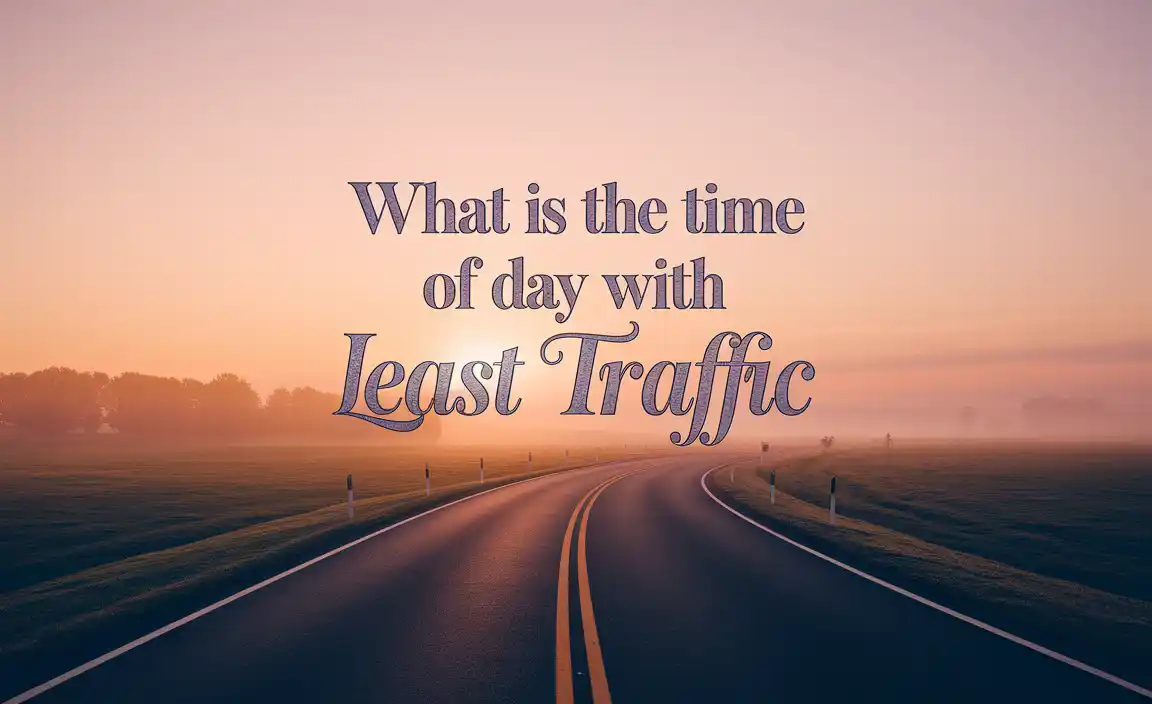Embark on an unforgettable Australia self-guided food tour by planning your culinary adventure with this essential guide. Discover how to map out your delicious journey, find hidden foodie gems, and savor the best of Australia’s diverse flavors with confidence and ease.
Dreaming of tasting your way across Australia? It’s a fantastic idea, but planning can feel a little overwhelming. Where do you even begin to find those incredible local treats and authentic experiences? Don’t worry, you’re not alone. Many travelers want to explore Australia’s vibrant food scene without a rigid schedule. This guide will show you how to create your perfect self-guided food tour, making sure every bite is a delight. Get ready to discover amazing flavors that will make your trip truly special.
Why a Self-Guided Food Tour in Australia is Your Best Bet
Australia is a melting pot of cultures, and its food scene reflects that beautifully. From fresh seafood on the coast to multicultural delights in the cities and unique produce in the outback, there’s so much to explore. A self-guided tour puts you in control. You can spend as much time as you like at a bustling farmers’ market, linger over a coffee at a quirky cafe, or dive deep into the flavors of a specific neighborhood. It’s the most flexible and rewarding way to experience Australia’s culinary heart at your own pace.
Step 1: Define Your Culinary Compass – What Flavors Call to You?
Before you can plan your route, think about what you love to eat. Australia offers an incredible range, so narrowing down your interests will make planning much easier. Consider these popular Australian food experiences:
- Fresh Seafood: Think oysters, prawns, fish and chips by the beach, or innovative seafood dishes in city restaurants.
- Multicultural Cuisine: Australia boasts vibrant Vietnamese, Italian, Chinese, Indian, Greek, and Middle Eastern communities, each bringing their incredible flavors.
- Farm-to-Table & Fresh Produce: Many regions focus on local ingredients. Explore farmers’ markets and restaurants championing regional produce.
- Australian Classics: Don’t forget iconic treats like pavlova, lamingtons, Tim Tams, and a good old Aussie meat pie.
- Coffee Culture: Australia, particularly Melbourne, is famous for its exceptional coffee. Cafes are an integral part of the food scene.
- Wine and Craft Beer: Explore world-renowned wine regions like the Barossa Valley or Margaret River, or discover the growing craft beer scene.
Jotting down your top 3-5 food interests will help you focus your research and create a more cohesive food tour. Are you craving spicy Asian street food, delicate European pastries, or the freshest catch of the day?
Step 2: Chart Your Course – Choosing Your Australian Food Destinations
Australia is vast! You’ll likely want to focus on specific cities or regions for your food tour. Here are some top contenders, each offering a unique culinary landscape:
Sydney: A Global Gastronomic Hub
Sydney is a fantastic starting point, offering a sophisticated and diverse food scene. Expect award-winning restaurants, lively food markets, and stunning waterfront dining.
- Must-try areas: Surry Hills (trendy cafes, international cuisine), Newtown (eclectic, budget-friendly eats), The Rocks (historic area with pubs and modern dining), and Bondi (beachside cafes and restaurants).
- Unique experiences: Explore the Sydney Fish Market for the freshest seafood, enjoy regional Australian produce at Carriageworks Farmers Market, and discover hidden laneway bars and eateries.
Melbourne: The Coffee and Culture Capital
Melbourne is legendary for its coffee culture, laneway eateries, and a passionate embrace of global flavors. It’s a paradise for foodies who love to explore.
- Must-try areas: Fitzroy (bohemian, diverse cafes and restaurants), Carlton (Italian influences), Chinatown (authentic Asian cuisine), and the CBD laneways (a maze of hidden cafes, bars, and restaurants).
- Unique experiences: Get lost in the city’s laneways for a true Melbourne food adventure, visit Queen Victoria Market for local produce and street food, and indulge in world-class brunch.
Adelaide: The Festival State’s Culinary Delights
Adelaide, often overlooked by tourists, is a hidden gem for food lovers, boasting excellent wineries in its surrounds and a thriving city food scene focused on fresh, local produce.
- Must-try areas: Adelaide Central Market (a vibrant hub of local produce, cheeses, meats, and international foods), Leigh Street and Peel Street (trendy small bars and eateries), Gouger Street (popular for Asian restaurants).
- Unique experiences: Taste wine in nearby regions like the Barossa Valley or McLaren Vale, explore the city’s growing number of rooftop bars, and savor dishes made with ingredients sourced directly from South Australia.
Tasmania: The Island of Pure Food and Wine
For those seeking pristine ingredients and stunning natural beauty, Tasmania is unparalleled. Its focus on high-quality, artisanal produce is legendary.
- Must-try areas: Hobart (Salamanca Market, waterfront restaurants, distilleries), Launceston (emerging foodie scene), and rural areas for farm gates and vineyards.
- Unique experiences: Taste world-class seafood (particularly oysters and salmon), sample artisanal cheeses, indulge in Tasmanian whisky and wine, and enjoy dishes featuring local berries and truffles.
Consider how much time you have and what kind of travel experience you prefer. Are you looking for urban bustle or serene countryside eats?
Step 3: Research and Discover – Finding Your Foodie Spots
This is where the fun really begins! With your destinations in mind, start digging for specific restaurants, cafes, markets, and food producers. Here’s how to find those hidden gems:
Leverage Online Resources
- Food Blogs and Travel Websites: Look for reputable Australian food blogs and travel sites. Use search terms like “best cafes Melbourne” or “Sydney seafood restaurants.”
- Review Sites: Websites like TripAdvisor and Google Maps are useful, but read reviews critically. Look for recurring positive comments about specific dishes or experiences.
- Social Media: Instagram is a visual feast. Search hashtags like #AustraliaFood, #MelbourneEats, #SydneyFoodie, or specific dish names to discover visually appealing locations and dishes.
- Official Tourism Websites: Websites like Australia.com often have dedicated food and wine sections that can point you in the right direction.
Explore Local Markets
Farmers’ markets and food halls are treasure troves for discovering local produce and sampling artisanal products. They often offer a more affordable and authentic taste of the region.
- Examples: Queen Victoria Market (Melbourne), Sydney Fish Market, Adelaide Central Market, Salamanca Market (Hobart).
Talk to Locals
If you strike up a conversation with hotel staff, shopkeepers, or other travelers, don’t be afraid to ask for their favorite food recommendations. Locals often know the best hidden spots.
Consider a Food Tour Company (for inspiration)
Even if you’re doing a self-guided tour, looking at the itineraries of reputable local food tour companies can give you fantastic ideas for places and types of food to seek out.
Step 4: Map Your Mouthwatering Itinerary
Now it’s time to organize your research into a workable plan. Don’t overschedule; leave room for spontaneity!
Create a Master List
Compile all the places you’re interested in visiting into a single document or spreadsheet. Include:
- Name of establishment
- Type of food/specialty
- Location (address)
- Opening hours
- Notes (e.g., “must-try dish,” “good for breakfast,” “great view”)
- Contact information or website
Group by Location
Organize your master list by neighborhood or proximity. This will save you time and travel between locations.
Allocate Meals and Snacks
Assign specific meals (breakfast, lunch, dinner) and snack times to your chosen spots. For example:
- Day 1 Breakfast: Local cafe in Surry Hills, Sydney.
- Day 1 Lunch: Seafood at Sydney Fish Market.
- Day 1 Afternoon Snack: Coffee and a treat from a renowned bakery.
- Day 1 Dinner: Multicultural cuisine in Newtown.
Plan Your Transportation
How will you get between your foodie destinations? Major cities usually have excellent public transport (trains, buses, trams). Walking is often the best way to explore food-rich neighborhoods. For more spread-out areas, consider ride-sharing services or renting a car (especially for wine regions).
Step 5: Pack Smart for Your Palate and Comfort
While your focus is food, don’t forget practicalities. Being comfortable will enhance your enjoyment of every meal and exploration. As Michael C. Herrera from Journey Essentials, I know that the right accessories can make all the difference.
The Essentials for Every Traveler
- Comfortable Walking Shoes: You’ll be doing a lot of exploring, from markets to laneways.
- Reusable Water Bottle: Stay hydrated, especially in warmer climates.
- Small Backpack or Crossbody Bag: To carry your essentials, snacks, and any market purchases.
- Portable Charger: So you can navigate, take photos, and look up restaurant reviews on the go.
- Lightweight Scarf or Hat: For sun protection.
Considering Longer Trips or Specific Needs
If your food adventure is part of a larger trip, or if you have specific comfort needs, packing strategically is key. For example, if you’re planning long travel days between destinations or have health concerns that require extra support:
- Adult Diapers/Incontinence Products: For peace of mind during long journeys or if you’re concerned about accessibility in remote areas. Discreet, comfortable options are available from brands often found in pharmacies or specialized online stores. Look for products that offer reliable absorbency and a secure fit, allowing you to focus on enjoying your food tour without worry.
- Child Diapers/Nappy Supplies: If you’re traveling with young children, ensure you have an ample supply of their usual diapers, wipes, and any preferred comfort items. Planning ahead for diaper changes in various locations will make the experience smoother for everyone.
- Travel-Sized Toiletries: Including any personal care items you might need.
Having these essentials sorted means less stress and more capacity to savor every delicious moment. We want travel to be about enjoyment and discovery, not discomfort.
Step 6: Indulge and Savor – Experiencing Your Food Tour
You’ve planned, you’ve packed, now it’s time to eat! Here are tips for making the most of your self-guided food experiences:
Be Adventurous
Step outside your comfort zone! Try a dish you’ve never had before. Australia’s diverse culinary influences mean there are always new flavors to discover.
Pace Yourself
Don’t try to cram too many big meals into one day. Mix in lighter snacks, coffee breaks, and plenty of water. This will help you appreciate each meal fully and avoid feeling uncomfortably full.
Observe and Engage
Visit local markets early to see the vibrant activity. Watch how chefs prepare food behind the scenes at trattorias or noodle bars. If you have the chance, chat with stallholders or chefs – they often have great stories and recommendations.
Capture the Memories
Take photos of your food, but also of the atmosphere, the people, and the places. These visuals will help you remember your culinary journey long after you’ve returned home.
Embrace Spontaneity
While planning is essential, be open to unexpected discoveries. If you stumble upon a charming cafe or a bustling street food stall that wasn’t on your list, go for it! Sometimes the unplanned moments lead to the most memorable experiences.
Australian Food Tour: Budgeting and Affordability
An Australia self-guided food tour can be enjoyed on various budgets. Here’s a quick look at how costs can vary:
| Category | Budget-Friendly (~ AUD $50-80/day/person) | Mid-Range (~ AUD $100-150/day/person) | Gourmet (~ AUD $200+/day/person) |
|---|---|---|---|
| Meals | Street food, market stalls, casual cafes, ‘pub grub’, picnic lunches. | Mix of casual eateries, nicer cafes for brunch, one or two mid-range restaurant dinners. | Fine dining, tasting menus, renowned restaurants, unique culinary experiences. |
| Drinks | Tap water, occasional soft drinks or basic coffee. | A few coffees/teas, a glass of wine or craft beer with a meal, occasional specialty coffee. | Enjoying premium wines, cocktails, specialty beverages with meals. |
| Activities | Exploring markets, walking food neighborhoods, free events. | A casual food or coffee tasting tour, entrance to a popular market with a few purchases. | Guided food tours, winery visits with tastings, cooking classes. |
| Shopping/Sweets | Occasional small treat or local souvenir. | A few local treats (e.g., artisanal chocolate, good coffee beans), small souvenirs. | Purchasing high-quality local produce, specialty items, unique souvenirs. |
Tips for Affordability:
- Farmers’ Markets: Often offer great value for fresh produce and ready-to-eat meals.
- Weekday Lunches: Many restaurants offer cheaper lunch specials than dinner menus.
- Happy Hours: Look for drink and appetizer deals in bars and pubs.
- Picnics: Grab some local cheese, bread, and fruit from a market and enjoy a scenic picnic.
- Tap Water: It’s safe and free to drink throughout Australia.
Essential Australian Food Experiences Checklist
Here’s a handy checklist to ensure you hit some iconic Australian food moments:
- Savor Fresh Oysters: Especially if you’re near the coast.
- Enjoy a ‘Barbie’ (BBQ): If you have access or find a public BBQ spot.
- Taste Iconic Australian Snacks: Think Tim Tams, Lamingtons, or a classic meat pie.
- Experience True Aussie Coffee Culture: Order a flat white or a long black.
- Visit a Vibrant Farmers’ Market: Immerse yourself in local produce.
- Sample Local Wine or Craft Beer: From a renowned region or a trendy brewery.
- Try a Multicultural Dish: Explore the amazing Asian, European, or Middle Eastern influences.
- Indulge in Fresh Seafood: A must-do in coastal cities.
- Seek out Regional Specialties: Depending on where you are (e.g., Tasmanian berries, South Australian wine).
- Don’t Forget Dessert: Pavlova, anyone?
Frequently Asked Questions (FAQ)
Q1: What’s the best time of year to do an Australia self-guided food tour?
Australia’s climate varies greatly. Spring (September-November) and Autumn (March-May) generally offer pleasant weather across most of the country, ideal for exploring and enjoying outdoor markets and dining. Summer (December-February) can be very hot in many inland and northern areas, while winter (June-August) is mild in the north and can be cool in the south.
Q2: How much time should I allocate for an Australia self-guided food tour?
It depends on how extensive you want it to be. For a taste of one city’s food scene, 3-5 days is a good start. To explore a couple of cities or a major food region (like a wine district), 1-2 weeks would be more suitable. Remember, Australia is huge, so don’t try to cover too much ground too quickly.
Q3: What if I have dietary restrictions (e.g., vegetarian, gluten-free)?
Australia is generally very accommodating of dietary needs. Most restaurants are aware of common requirements like vegetarian, vegan, and gluten-free options. It’s always best to check menus online in advance or inform your server when ordering. You’ll often find dedicated vegetarian or vegan cafes in major cities too.
Q4: Are there any essential apps for a food tour in Australia?
Yes! Google Maps is invaluable for navigation and finding places. Google Translate can help with menus or communicating if needed. Apps like “Zomato” or






